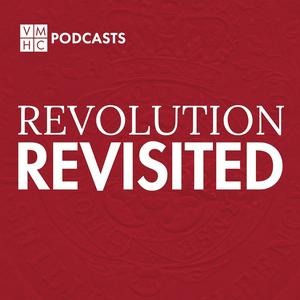Recap 1774: Through the eyes of Edmund Pendleton
Words had turned to action, and revolutionary sentiment simmered amongst Virginians. In this episode of Revolution Revisited, host Maggie Creech provides a preview of the upcoming Season 2, along with a refresher on key points from the previous season.Inside the Episode:Before anyone fired a shot in the American Revolution, the colonies were already on edge and Virginia was right in the middle of it. In this bonus episode of Revolution Revisited, we’re dropping into the spring and summer of 1774, a moment when anger at British rule was building fast, but full-blown independence still felt impossible. Our guide is a single letter from Virginia statesman Edmund Pendleton to his friend Joseph Chew. It’s preserved at the Virginia Museum of History and Culture, and it captures a snapshot in time when people were fighting with words, not weapons.Pendleton writes about the chaos in Boston and a fresh round of harsh laws from Parliament. You can feel the colonies starting to come together. In Virginia, lawmakers declared a day of fasting, humiliation, and prayer to stand with Boston until Royal Governor Lord Dunmore shut them down. So, the Burgesses met anyway at the Raleigh Tavern and quietly began organizing. From there, everything sped up: Patrick Henry’s “liberty” thundered through the colony, Lexington and Concord erupted, and Dunmore escalated things even more, seizing gunpowder and threatening to arm enslaved Virginians. Debate turned into rebellion.This one letter also puts real faces to the choices people had to make. Pendleton, careful and cautious at first, would help draft the Virginia Declaration of Rights and steer the new nation’s early steps. Chew, who was friends with Washington and Madison, stayed loyal to the Crown. Their paths remind us the Revolution wasn’t a simple split between patriots and loyalists. It was a personal decision for every colonist.This episode connects those early cracks in the system to the moment the break finally comes and sets up Season 2, when the fight for liberty moves from letters and taverns to battlefields and declarations.TIMESTAMPS:[00:35] Host Maggie Creech previews Season 2 and introduces a 1774 letter from Edmund Pendleton to Joseph Chew as a lens on pre-revolution tensions.[01:10] The Royal Proclamation of 1763 is explained as a key source of colonial frustration and the spark for westward expansion debates.[01:45] Pendleton’s letter describes Parliament’s punishment of Boston through the Port Act, seen by Virginians as a direct attack on American rights.[02:31] The Boston Tea Party and its consequences unfold as Virginia declares a day of fasting, humiliation, and prayer in solidarity with Massachusetts.[03:15] Governor Dunmore dissolves the Virginia House of Burgesses, pushing members to meet at the Raleigh Tavern to plan resistance.[04:00] The colonies’ first steps toward unity take shape as twelve colonies gather in Philadelphia for the First Continental Congress.[04:50] Pendleton warns of new conflict in the Ohio Valley, as Lord Dunmore mobilizes militias and clashes erupt with Indigenous nations.[05:30] The narrative shifts to spring 1775 when Patrick Henry’s “Give me liberty or give me death” speech inspires Virginia’s independent militia.[06:05] The “shot heard ’round the world” at Lexington and Concord coincides with Dunmore’s seizure of gunpowder and threats to free enslaved people.[06:45] Virginia edges from loyalty to revolution as words turn to action and resistance spreads across the colony.[07:15] Pendleton’s transformation from cautious loyalist to revolutionary leader contrasts with Chew’s decision to remain faithful to Britain.[07:55] Reflection on how patriot and loyalist divisions were more complex than hindsight suggests.[08:20] Maggie previews Season 2 topics: the Battle of Great Bridge, Virginia’s evolving identity, and its role in shaping the Declaration of Independence.The voiceover of Edmund Pendleton's letter in this episode was generated by AI. The content of the transcript itself was not altered.RELATED CONTENT:Virginia Museum of History & CultureRevolution Revisited PodcastRevolution Revisited Season 1Edmund Pendleton


